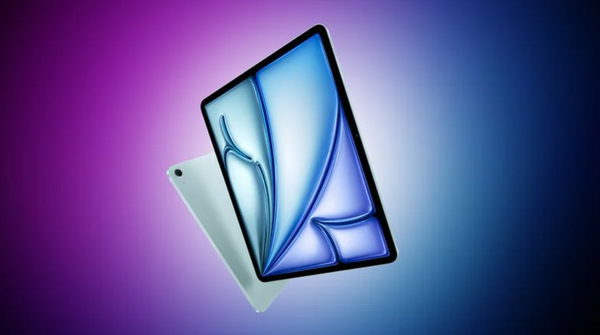
Apple is reportedly gearing up for the launch of a new iPad Air this spring, and it’s expected to feature the highly anticipated M4 chip, skipping the M3 generation entirely. According to Bloomberg’s Mark Gurman, this leap in processing power could mark a significant upgrade for the iPad Air line, offering a smoother and faster user experience.
M4 Chip and Performance Boost
One of the key highlights of the upcoming iPad Air is its new M4 chip, which will provide a substantial performance boost over its predecessors. The M4 chip is expected to offer improved processing speeds, enhanced power efficiency, and more robust support for demanding applications. By skipping the M3 generation, Apple seems focused on bringing the iPad Air closer to the performance level of the iPad Pro, making it an ideal choice for both professionals and casual users alike.
Possible Face ID Upgrade: Not Likely
There have been rumors suggesting the potential addition of Face ID technology to the new iPad Air. While Face ID has been a part of the iPad Pro lineup for more than six years, the iPad Air may not feature this upgrade. Foreign media analysis suggests that although Face ID has performed well on the iPad Pro, it may not be included in this iteration of the iPad Air, likely due to cost considerations and the positioning of the device within Apple’s product lineup.
Expected Features and Enhancements
Aside from the M4 chip, the new iPad Air is expected to come with several notable enhancements. One of these improvements is the screen brightness, which may reach 600 nits as a standard, offering better visibility in bright environments. The device is also rumored to support Wi-Fi 7 technology, aligning with the advancements seen in the iPhone 16 series. Additionally, the iPad Air could feature a rear LED flash for enhanced photography and a Thunderbolt interface for faster data transfer.
Design and Experience Refinements
While the overall design of the new iPad Air may not undergo significant changes, Apple is expected to make minor adjustments to enhance the user experience. These adjustments may include subtle improvements to the device’s feel, ensuring a more refined and comfortable experience for users.
Recap of the Previous iPad Air
Looking back to May 7 last year, Apple released the previous iPad Air model, which featured an upgraded front camera with a character-centering function, the powerful M2 chip, and new storage options of 512GB and 1TB. The device also introduced a 13-inch version with improved external bass, offering twice the volume of the 11-inch version. Other new features included the Apple Pencil hover function and Magic Keyboard compatibility. The iPad Air was also available in four vibrant colors: blue, purple, starlight, and midnight.
Pricing and Availability
As for the pricing, the new iPad Air is expected to maintain a similar price range to its predecessor. The 11-inch version of the current iPad Air starts at 4,799 yuan, while the 13-inch version is priced at 6,499 yuan. It’s anticipated that the 2025 iPad Air will be priced similarly, ensuring it remains an accessible and competitive option in the tablet market.
Conclusion
With the introduction of the M4 chip and several performance enhancements, the new iPad Air is set to be a powerful device that will likely appeal to a broad range of users. While it may not feature Face ID, the other upgrades and enhancements should make the iPad Air a top contender in the tablet market this spring.






